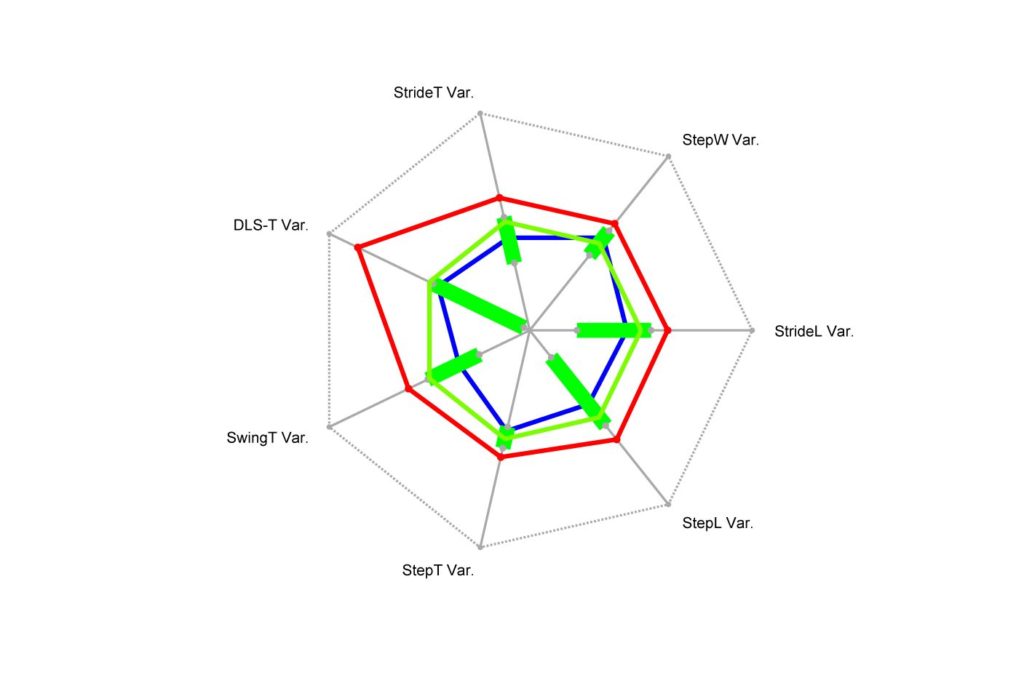By Deepak Kumar Ravi.
Variability within repetitive movements such as walking, has provided unique knowledge about the functional adaptations associated with ageing and pathology. A robust body of literature suggests that there is an optimal range of movement variability during walking in healthy individuals. Below this range, movement is likely very rigid while variability above this optimal range is associated with instability, with each extreme indicating movement deficits. The interpretation of movement variability during walking could additionally benefit from a clear characterisation of the values associated with healthy asymptomatic and pathological walking patterns. Such normative values could encourage the clinical uptake for the purposes of screening individuals that might suffer from movement impairments. We addressed these issues by undertaking a systematic review and meta-analysis of the literature to define clear threshold values for healthy and pathological variability during walking.
The coefficient of variation (%CV) of common spatio-temporal gait parameters were extracted from a total of 85 studies. In total, we extracted data based on 2409 patients with a neurological disorder and 2523 healthy asymptomatic controls. Through meta-analysis, we derived optimal thresholds for stride time variability: 2.34 %CV [95% confidence interval: 1.92-2.76 %CV] that effectively discriminate pathological from asymptomatic walking patterns with an overall accuracy of 75%. Optimal boundaries for variability of six other parameters of walking (stride length, step length, swing time, step time, step width, dual limb support time) are also provided in our review. We subsequently applied the derived thresholds for asymptomatic gait to a retrospective case control study. We found that gait variability of healthy controls was indeed within our derived window for healthy physiological gait, while the average gait variability of people with Parkinson’s disease consistently lay outside of this window.
Our review provides clear thresholds for healthy vs. pathological walking performance, which allow us to associate an individual’s quality of movement with their underlying neural status. Furthermore, the optimal thresholds has implications that can advance movement-based biomarkers to characterize complex neuro-adaptive behaviors in both healthy and pathological individuals.

Figure: Window of healthy physiological gait (as indicated by the green bars) with an overlay of retrospective case-control study data. The lines indicate average gait variability for healthy asymptomatic controls obtained from the systematic review (i.e. normative data, in green), for people with Parkinson’s disease (in red) and healthy older adults (in blue). All the values are represented as standardized z-scores (on a scale -3.5 to 3.5) with respect to normative data obtained from the systematic review.
Publication
Ravi DK, Gwerder M, Ignasiak NK, Baumann CR, Uhl M, van Dieën JH, Taylor WR, Singh NB. Revealing the optimal thresholds for movement performance: A systematic review and meta-analysis to benchmark pathological walking behavior. Neuroscience and Biobehavioral Reviews, 2019. DOI: https://doi.org/10.1016/j.neubiorev.2019.10.008
About the Author

Deepak Kumar Ravi
Institute of Biomechanics, ETH Zurich
Deepak is a PhD candidate at the Laboratory of Movement Biomechanics (https://movement.ethz.ch) at ETH Zurich Switzerland. He is working with Dr Navrag Singh, characterising motor-related adaptations due to aging and neuro-motor pathologies, but also with external perturbations.
Copyright
© 2019 by the author. Except as otherwise noted, the ISPGR blog, including its text and figures, is licensed under a Creative Commons Attribution-ShareAlike 4.0 International License. To view a copy of this license, visit https://creativecommons.org/licenses/by-sa/4.0/legalcode.
ISPGR blog (ISSN 2561-4703)
Are you interested in writing a blog post for the ISPGR website? If so, please email the ISGPR Secretariat with the following information:
- First and Last Name
- Institution/Affiliation
- Paper you will be referencing


